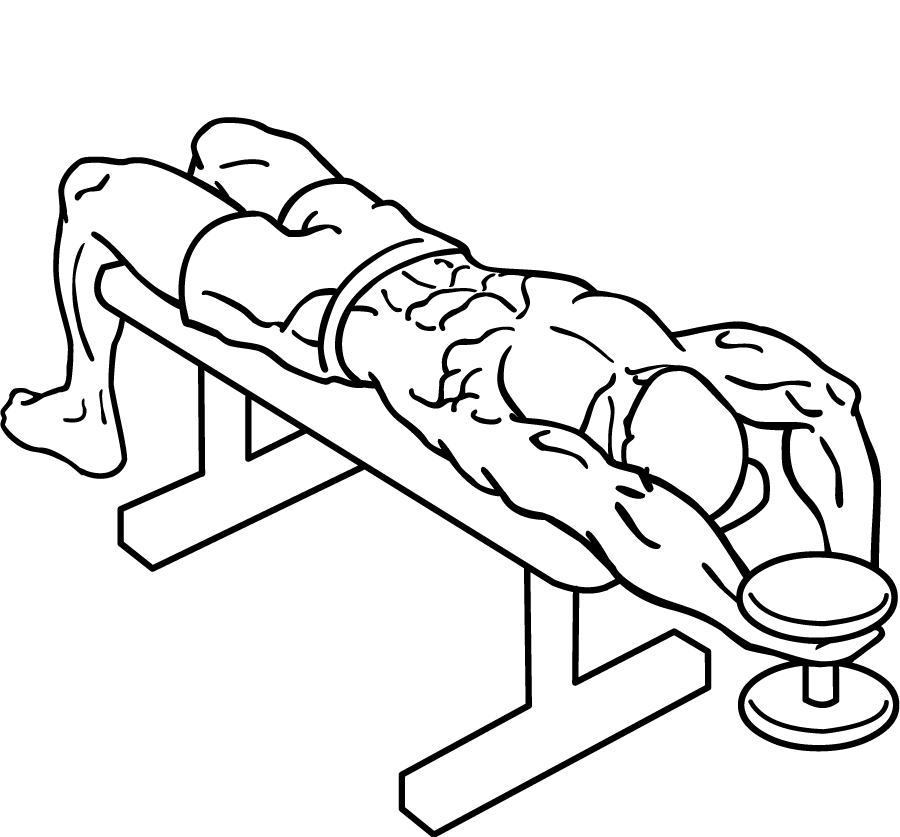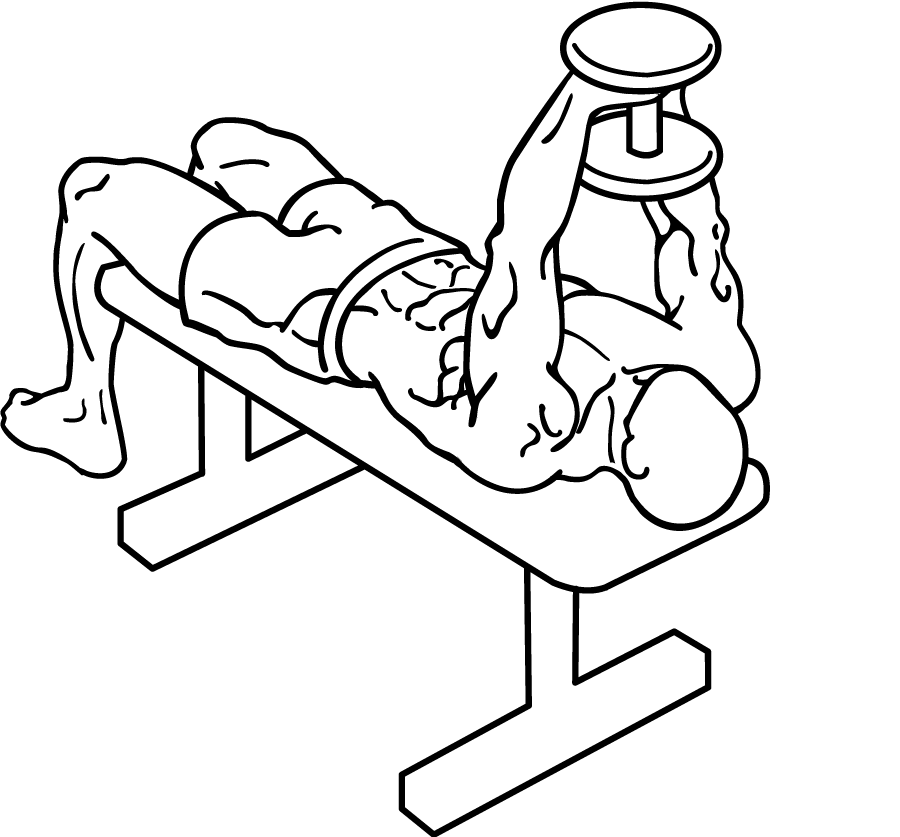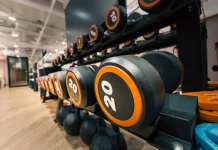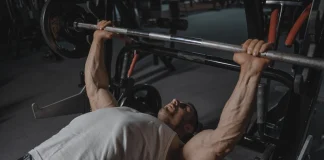Last Updated on September 30, 2022
The dumbbell bent arm pullover is one of the most effective compound exercises you can add to your strength-training routine. It’s a versatile movement that works multiple upper body muscles, including the chest, shoulders, lats, and even the biceps. Whether you’re a beginner looking to build foundational strength or an experienced lifter aiming to diversify your workouts, this exercise offers a unique blend of muscle activation that can enhance both aesthetics and functional strength.
In this comprehensive guide, we’ll break down everything you need to know about the dumbbell bent arm pullover—from its benefits, the muscles it targets, how to perform it correctly, common mistakes to avoid, and some variations to keep your routine fresh.
Why the Dumbbell Bent Arm Pullover Should Be in Your Routine
This classic bodybuilding exercise has been around for decades, favored by athletes who want to develop their upper body strength and improve muscle tone. Here are a few reasons why you should consider including it in your workout:
1. Multiple Muscle Engagement
Unlike isolation exercises that focus on a single muscle group, the dumbbell bent arm pullover activates several key muscles at once. It’s an excellent way to target the chest, shoulders, lats, and biceps all in one movement. This makes it highly efficient for those looking to maximize their workout in a shorter amount of time.
2. Improves Chest Expansion
The stretch you achieve while lowering the dumbbell in this exercise helps with chest expansion. This can improve your overall posture, especially if you spend a lot of time sitting or working at a desk. An expanded chest also enhances your lung capacity, which can be beneficial for athletes involved in endurance sports.
3. Promotes Shoulder Mobility
Since this exercise involves a large range of motion, it also helps improve flexibility and mobility in the shoulders. This is particularly beneficial if you’ve had shoulder issues in the past or if you’re trying to increase the range of motion for other upper body movements like overhead presses or pull-ups.
4. Boosts Lat Strength
The dumbbell bent arm pullover is an underrated exercise for targeting the latissimus dorsi (lats). This muscle runs along the sides of your back and contributes to that desirable V-shaped torso. Building stronger lats not only improves your physique but also enhances your performance in exercises like deadlifts and rows.
Muscles Worked by the Dumbbell Bent Arm Pullover
Before diving into the step-by-step guide, let’s take a closer look at the muscles this exercise targets:
- Pectoralis Major (Chest): The chest muscles are highly engaged throughout the movement, particularly during the lifting phase of the pullover.
- Latissimus Dorsi (Lats): The lats play a crucial role in the lowering phase of the exercise as they help control the weight and stretch as the dumbbell moves behind your head.
- Deltoids (Shoulders): Your shoulder muscles, specifically the anterior deltoids, assist in stabilizing the movement and contribute to lifting the dumbbell back to the starting position.
- Triceps Brachii (Triceps): The triceps help stabilize the elbow joint, though they are more engaged in a supporting role.
- Biceps Brachii (Biceps): The biceps are also involved, assisting the shoulders and chest in pulling the dumbbell back up.
The combination of these muscle groups makes the dumbbell bent arm pullover a powerful compound exercise, hitting both the upper chest and back muscles in one go.
How to Perform the Dumbbell Bent Arm Pullover
Now, let’s break down the proper form and technique for the dumbbell bent arm pullover to ensure you’re performing it safely and effectively.
1. Setup on the Bench
Start by lying flat on a bench, with your upper back and shoulders in contact with the bench’s surface. Your head should hang slightly off the end, and your feet should be flat on the floor for stability. Make sure your back remains in a neutral position throughout the movement to avoid unnecessary strain on your spine.
2. Grip the Dumbbell
Hold the dumbbell vertically with both hands, gripping it firmly at one end. Your hands should form a diamond shape around the dumbbell, with your palms facing upward and your thumbs wrapped around the weight for security. Keep your elbows slightly bent throughout the exercise to reduce the stress on your joints.
3. Start in the Extended Position
With your arms fully extended above your chest, engage your core and take a deep breath in. This will help stabilize your body as you prepare to lower the dumbbell. Your elbows should remain slightly bent and fixed in this position throughout the entire movement.
4. Lower the Dumbbell
Slowly lower the dumbbell in an arc over your head, making sure to control the movement as it moves toward the floor. Focus on feeling the stretch through your chest and lats as you lower the weight. Keep your core engaged to protect your lower back, and don’t let your elbows bend too much. Lower the dumbbell until your arms are roughly in line with your ears or slightly below—this will depend on your shoulder mobility.
5. Return to Starting Position
Once you’ve reached the bottom of the movement, exhale and slowly reverse the motion, pulling the dumbbell back over your chest in a controlled manner. Squeeze your chest and lats at the top of the movement to maximize the contraction before repeating the exercise.
6. Repeat for Desired Repetitions
For muscle growth, aim for 3-4 sets of 8-12 repetitions, ensuring you maintain proper form throughout. If you’re working on endurance, you can increase the rep range to 15-20 per set.
Tips for Proper Form
To get the most out of the dumbbell bent arm pullover and avoid injury, here are a few tips to ensure correct form:
- Maintain a Slight Bend in the Elbows: Keeping a slight bend in your elbows throughout the movement reduces strain on your shoulder joints and keeps the focus on the chest, lats, and shoulders.
- Engage Your Core: A strong core will help stabilize your body and prevent your lower back from arching during the exercise. Avoid letting your ribs flare or your lower back overextend.
- Slow and Controlled Movements: Don’t rush through the movement. Lowering the dumbbell slowly will maximize the stretch in your chest and lats, making the exercise more effective.
- Stop if You Feel Shoulder Pain: If you experience any discomfort in your shoulders during the exercise, stop immediately. You may need to adjust your form or reduce the range of motion to avoid injury.
Common Mistakes to Avoid
While the dumbbell bent arm pullover is a relatively simple exercise, there are a few common mistakes that can compromise its effectiveness or lead to injury.
1. Using Too Much Weight
One of the most common errors is trying to lift too heavy too soon. This can lead to poor form, which reduces the effectiveness of the exercise and increases the risk of injury. Start with a manageable weight and gradually increase as your strength improves.
2. Arching the Lower Back
Allowing your lower back to arch excessively can place unnecessary strain on your spine. Engage your core and keep your back flat on the bench to maintain proper alignment throughout the exercise.
3. Letting the Elbows Flare Out
Flaring your elbows too much during the movement can shift the focus away from your chest and lats and put more pressure on your shoulders. Keep your elbows slightly bent and close to your body to avoid this mistake.
4. Rushing the Movement
Performing the exercise too quickly can reduce the muscle engagement and stretch that the exercise provides. Focus on slow, controlled movements to ensure you’re working the target muscles effectively.
Variations of the Dumbbell Bent Arm Pullover
Once you’ve mastered the standard dumbbell bent arm pullover, you can try a few variations to mix things up and challenge your muscles in different ways.
1. Barbell Pullover
Instead of using a dumbbell, you can perform the same movement with a barbell. This variation allows you to lift heavier weights and puts a slightly different emphasis on the chest and lats.
2. Kettlebell Pullover
Using a kettlebell can increase the difficulty of the exercise by adding instability, forcing your core and stabilizer muscles to work harder to control the weight.
3. Single-Arm Dumbbell Pullover
If you want to isolate each side of your body, try performing the dumbbell pullover one arm at a time. This variation can help correct muscle imbalances and improve unilateral strength.
Incorporating the Dumbbell Bent Arm Pullover into Your Workout
The dumbbell bent arm pullover is a versatile exercise that can be integrated into different parts of your workout routine, depending on your goals.
1. As Part of a Chest Workout
Since the dumbbell bent arm pullover engages the chest muscles, it can be included in your chest day routine. Pair it with exercises like the bench press, chest flyes, and push-ups to fully fatigue your chest muscles.
2. During Back Workouts
Because this exercise also targets the lats, it can be a valuable addition to your back workout. Use it alongside pull-ups, lat pulldowns, and rows to build a stronger, more defined back.
3. As a Finishing Move
The pullover can also be used as a finishing move at the end of your upper body workouts. The stretch it provides will help loosen up tight muscles while still offering an intense burn.
Unlock the Power of the Dumbbell Bent Arm Pullover
The dumbbell bent arm pullover is a classic compound exercise that offers multiple benefits for strengthening and sculpting the upper body. By engaging the chest, lats, shoulders, and biceps in one fluid movement, this exercise provides a well-rounded workout in less time. Incorporating it into your routine will not only improve your strength but also enhance your flexibility and shoulder mobility.
Whether you’re just starting out or you’re an experienced lifter, the dumbbell bent arm pullover is a must-have in your exercise arsenal. Just remember to focus on proper form, start with an appropriate weight, and gradually increase the intensity as you progress.








